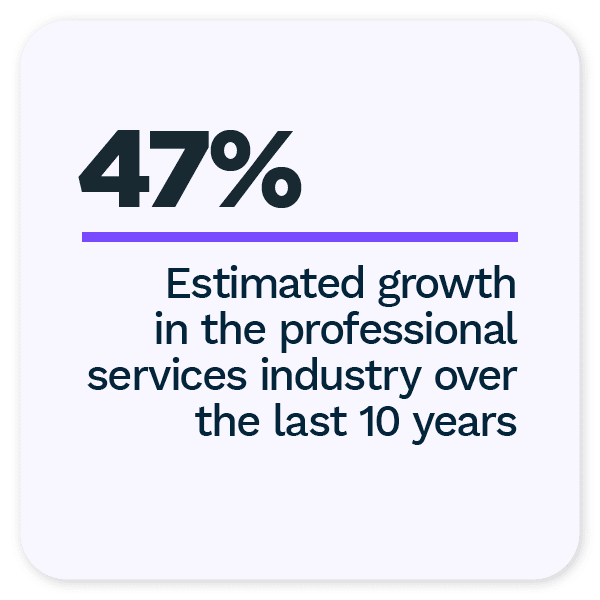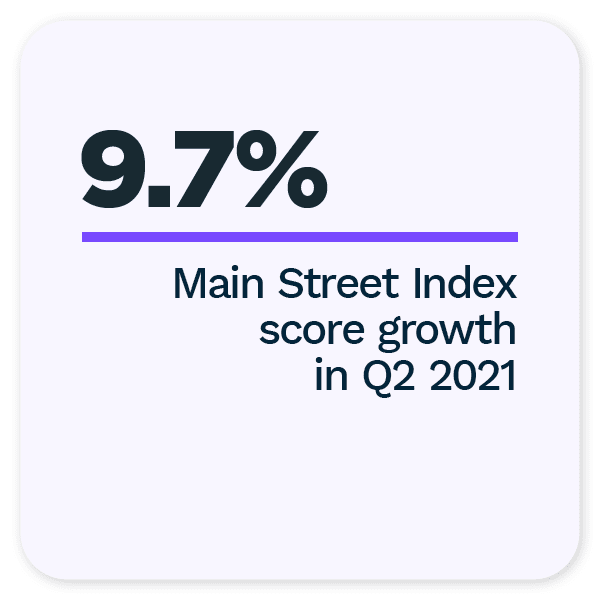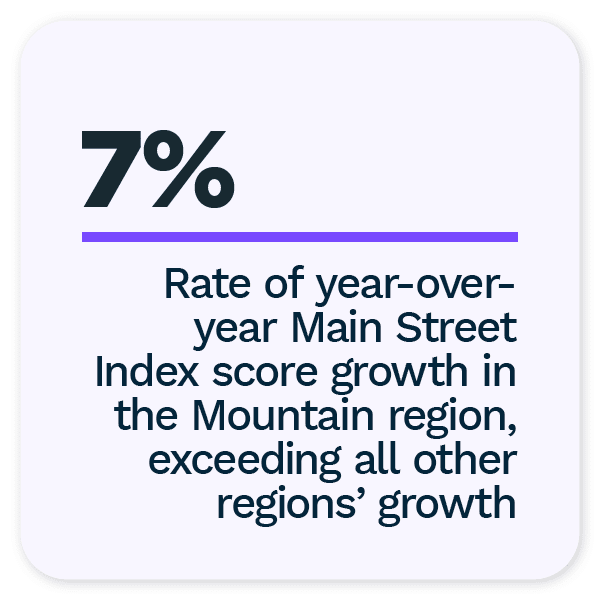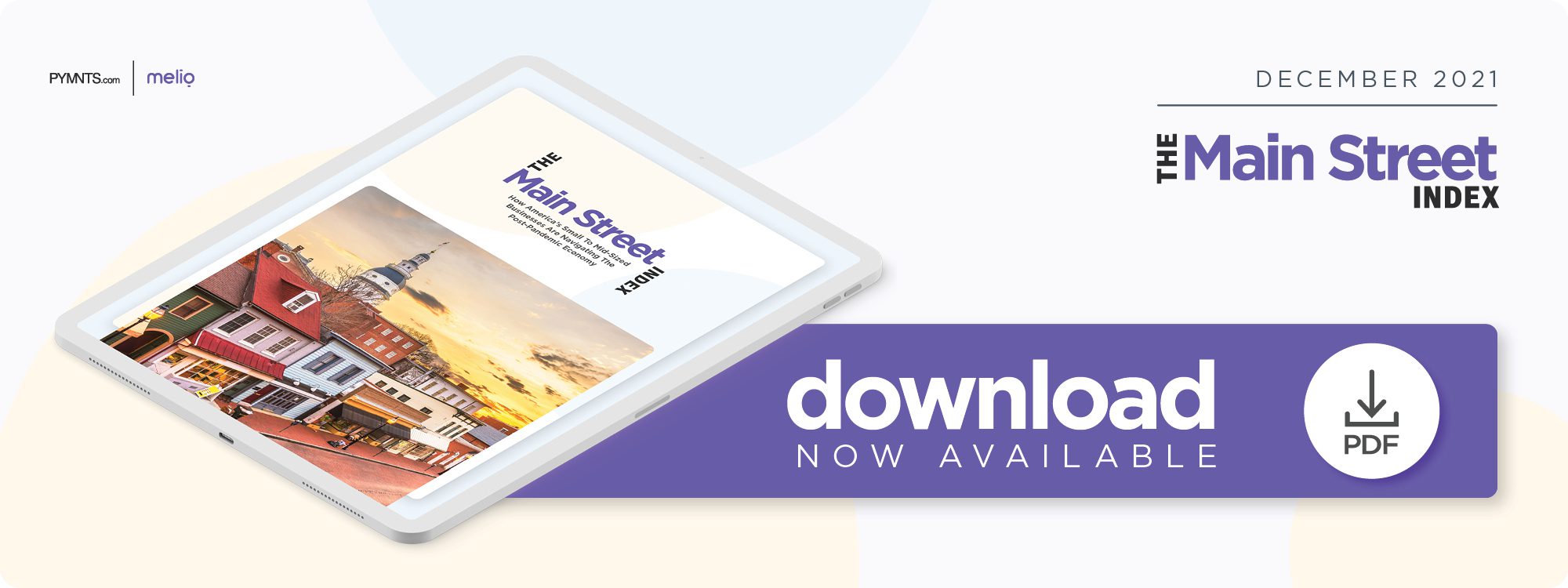Resilient Main Street Businesses Use Digital to Keep Recovery on Track

Main Street businesses — the small- to mid-sized businesses (SMBs) that represent the lion’s share of American commercial enterprises — are emerging from a chaotic year with the hope of a less fraught 2022. Despite SMBs’ long history of resilience, their long-term prospects and regional outlooks remain uneven and their success wholly dependent on their ability to overcome key challenges, such as labor shortages and the prospect of an intensified pandemic.
As SMBs navigated economic uncertainty in the early days of the pandemic, differences in wag es, employment levels, industry buy-in and regional economic turbulence impacted the speed and scale of growth. Now, as inflation, erratic GDP growth and the ramifications of a continuing pandemic add layers of uncertainty to SMBs’ efforts to fully recover, PYMNTS data outlines the possibility that Main Street can overcome from its challenges.
es, employment levels, industry buy-in and regional economic turbulence impacted the speed and scale of growth. Now, as inflation, erratic GDP growth and the ramifications of a continuing pandemic add layers of uncertainty to SMBs’ efforts to fully recover, PYMNTS data outlines the possibility that Main Street can overcome from its challenges.
The Main Street Index: How America’s Small To Mid-Sized Businesses Are Navigating The Post-Pandemic Economy, a PYMNTS and Melio collaboration, is based on the econometric analysis of more than 10 million individual data records, collected between 2004 and 2021. The Index measures the numerical rise in new establishments, real wages and employment by region, industry, and economic quarter, assigning a score indicating positive or negative growth trends.
Key findings from the study include:
Despite fluctuations due to the pandem ic, America’s SMBs have slowly approached recovery, and businesses that make up the Main Street Merchant Index™ (MSI) are expected to reach an all-time high score of 128 in Q3 2021. Main Street was quicker to bounce back from the pandemic, but forecasts indicate GDP will likely catch up. The estimated growth of the MSI going into Q3 2021 reaches an annualized rate of 1.4%, relative to Q2 2021.
ic, America’s SMBs have slowly approached recovery, and businesses that make up the Main Street Merchant Index™ (MSI) are expected to reach an all-time high score of 128 in Q3 2021. Main Street was quicker to bounce back from the pandemic, but forecasts indicate GDP will likely catch up. The estimated growth of the MSI going into Q3 2021 reaches an annualized rate of 1.4%, relative to Q2 2021.
Half of core MSI business sectors have yet to recover to their pre-pandemic levels. The professional services sector is estimated to grow 6.7% compared to Q3 2020, and both eating and drinking places (6.6%) and fitness centers (6.1%) continue to recover from the pandemic’s low point. These establishments currently stand at only 20% of the level where they were in 2019.
Region-to-region, post-pandemic growth paths show evidence of an increasing disparity between MSI index results. The Northeast has seen a growth in its MSI of an annualized 3% throughout 2021, similar to that of the South (3.9 %) or the Southwest (3.1%). The South and Southwest have exceeded their pre-pandemic scores, the Northeast still stands 2% below pre-pandemic levels.
disparity between MSI index results. The Northeast has seen a growth in its MSI of an annualized 3% throughout 2021, similar to that of the South (3.9 %) or the Southwest (3.1%). The South and Southwest have exceeded their pre-pandemic scores, the Northeast still stands 2% below pre-pandemic levels.
To learn how Main Street has navigated recovery so far and how its future is taking shape, download the Index.

